Plant focus: Climbers
Everything you need to know about climbing plants
Climbing plants are a cornerstone of garden and landscape design, celebrated for their ability to add vertical interest, soften harsh structures, bring colour, fragrance, and texture to spaces of all sizes. They are incredibly versatile, making use of areas that might otherwise be left bare or unremarkable. Whether growing up a fence, spilling over an archway, or weaving through a pergola, climbers offer a unique way to elevate garden designs and make the most of every available surface.
In small gardens, climbers help make the most of limited space. Instead of spreading horizontally like many shrubs, they grow upwards, adding another layer to planting designs. Climbing plants are also used to create natural screens for privacy, dividing areas of a garden or shielding spaces from neighbouring views. Their flowers and foliage often attract pollinators, birds, and beneficial insects, making them a great addition to wildlife-friendly gardens. In commercial landscaping, climbers can soften the appearance of large walls, reduce noise levels, or even help with insulation and temperature regulation on building exteriors. What is it that defines a climbing plant? How do they manage to grow upwards, and what challenges should gardeners watch out for when planting them? These are some of the key questions explored when looking at climbing plants and their role in transforming outdoor spaces.
What is a climbing plant?
Climbing plants are species that have evolved to grow vertically, using nearby supports to reach sunlight and space without developing a thick, self-supporting trunk. This growth habit allows them to thrive in environments where horizontal ground space is limited or where competition for light is strong. Instead of investing energy into creating a rigid framework like trees or large shrubs, climbers produce long, flexible stems that can weave, twine, or cling to structures and neighbouring plants.
Climbers can be either evergreen or deciduous. Evergreen varieties, like ivy (Hedera helix) or star jasmine (Trachelospermum jasminoides), retain their foliage year-round, providing constant coverage and privacy. Deciduous climbers, such as many clematis (Clematis spp.) or wisteria (Wisteria spp.) species, shed their leaves in autumn but often make up for this with spectacular blooms or striking seasonal colour. Some climbers grow rapidly, quickly covering fences or walls, while others are slower and more controlled, making them suitable for smaller gardens or delicate structures.
Key Characteristics of Climbing Plants:
✓ Long, flexible stems that rely on support structures
✓ Can be evergreen or deciduous
✓ Many produce colourful, fragrant flowers
✓ Growth habits include twining stems, tendrils, aerial roots, or hooked thorns
✓ Ideal for covering fences, walls, arches, and pergolas
✓ Great for adding vertical interest to gardens with limited space
✓ Attractive to pollinators and other wildlife
✓ Vigor and growth speed vary widely between species
✓ Require regular training and pruning for best results
✓ Suitable for both ornamental and practical screening purposes
How do plants climb?
Climbing plants have developed a fascinating range of adaptations that allow them to grow upwards without forming thick, self-supporting stems. Their main goal is to reach sunlight efficiently, and to achieve this, they use surrounding structures or plants for support. Different climbers rely on different techniques, each suited to their natural environment and growing style.
One common method is twining stems, where the plant spirals its flexible shoots around supports as it grows. Honeysuckle is a classic example, wrapping itself tightly around poles, trellises, or neighbouring branches to secure itself in place. Other climbers use tendrils, which are slender, curling structures that can be modified stems or leaf stalks. Clematis is well known for this approach, delicately gripping thin wires, mesh, or nearby plants to climb.
Some species, like ivy, use aerial roots to attach themselves to surfaces. These tiny rootlets grow along the stem and produce a sticky substance that allows the plant to cling firmly to walls, tree trunks, or rocks. This method enables vertical growth even when no other supports are available, making ivy a popular choice for covering bare masonry or creating green walls.
Certain plants, such as climbing roses or bougainvillaea, rely on hooks, spines, or thorns to help them scramble upwards. These act as natural anchors, allowing stems to catch and hold onto other plants or supporting structures. Many of these climbers benefit from being tied or trained to achieve the best shape and coverage.
There are also scramblers, plants that lack specialised climbing features but use their long, arching stems to lean on and weave through other plants or supports. Rambling roses are a well-known example, creating a graceful, flowing effect when given the space to grow freely.
These climbing techniques allow plants to make the most of their environment, growing upward to capture sunlight and spread into new spaces. By adapting their growth habits in these ways, climbers thrive in crowded habitats and provide gardeners with an excellent solution for covering fences, trellises, and walls with greenery and flowers.
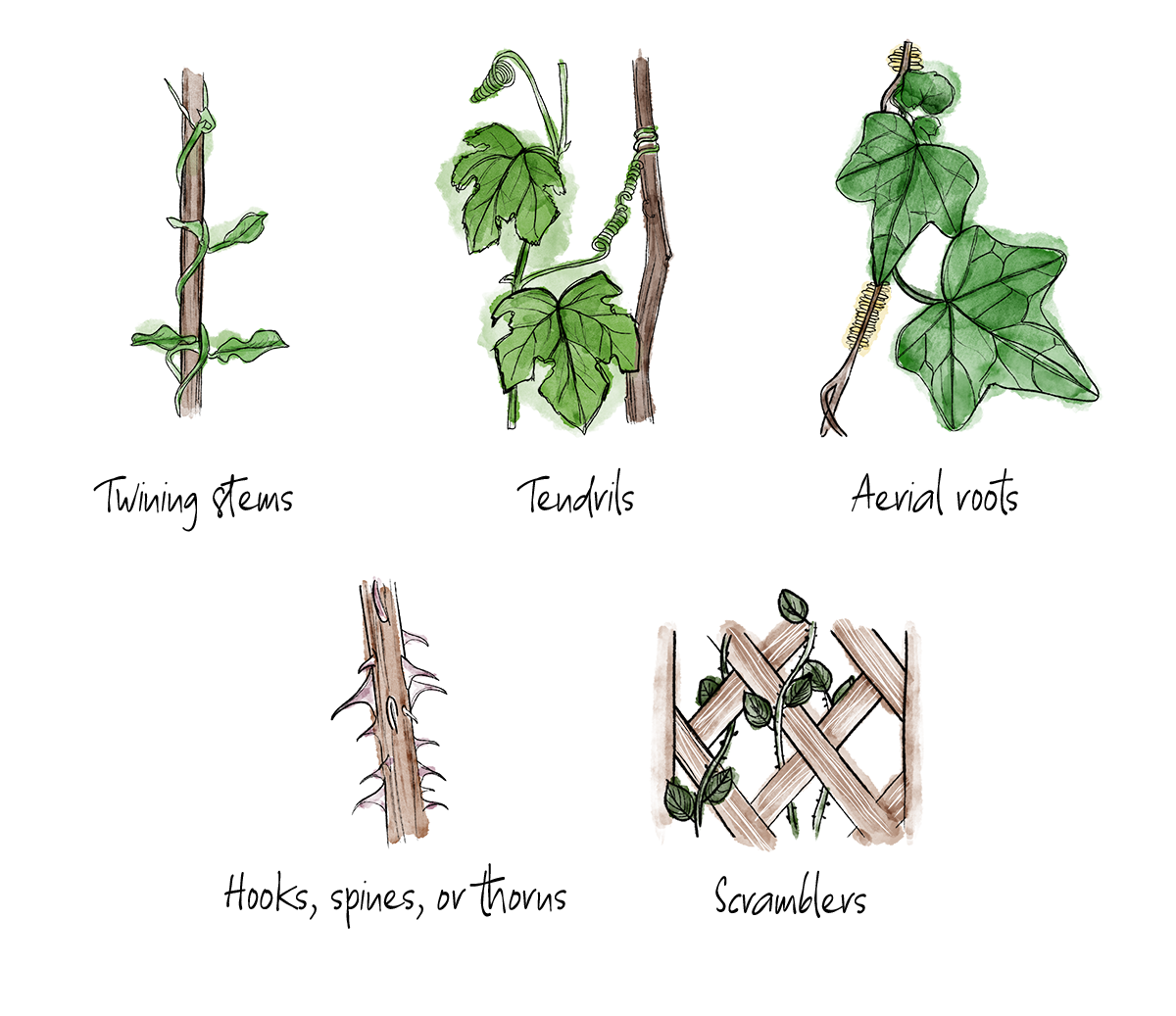
Popular climbing varieties we grow and sell:
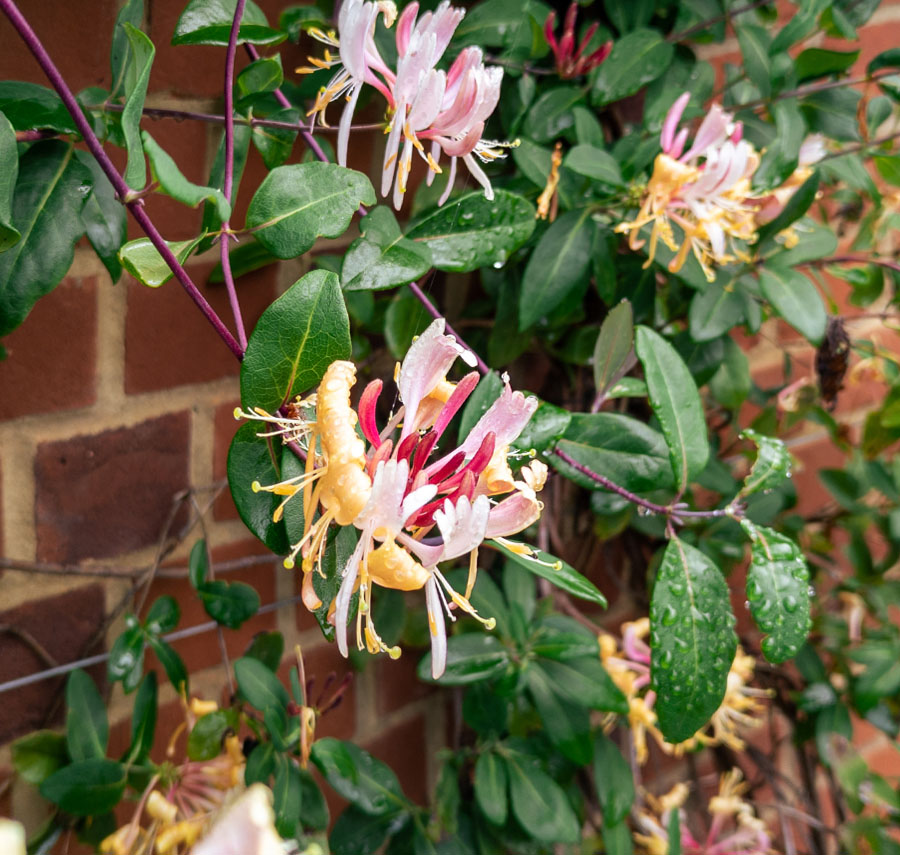
Lonicera periclymenum
Clematis armandii
Evergreen climber with twining leaf stalks, producing clusters of fragrant, star-shaped white flowers in early spring. Grows to around 4–5 m with suitable support. Prefers a sunny or lightly shaded position with roots kept cool and moist. Ideal for covering trellises, fences, or weaving through established shrubs for year-round foliage and early-season blooms.
Lonicera periclymenum
Native honeysuckle valued for its highly fragrant, tubular flowers in shades of creamy-white and yellow, appearing from late spring through summer, followed by clusters of bright red berries loved by birds. Semi-deciduous twining stems reach 4–5 m. Thrives in sun or partial shade in well-drained soil, perfect for hedgerows, pergolas, or walls where pollinators can enjoy it.
Rosa ‘New Dawn’
Classic climbing rose producing soft pink, delicately scented blooms from early summer to autumn. Vigorous, hardy habit reaching 3–4 m with training. Glossy green foliage with good disease resistance. Requires tying and guiding to supports, ideal for walls, arches, and pergolas.
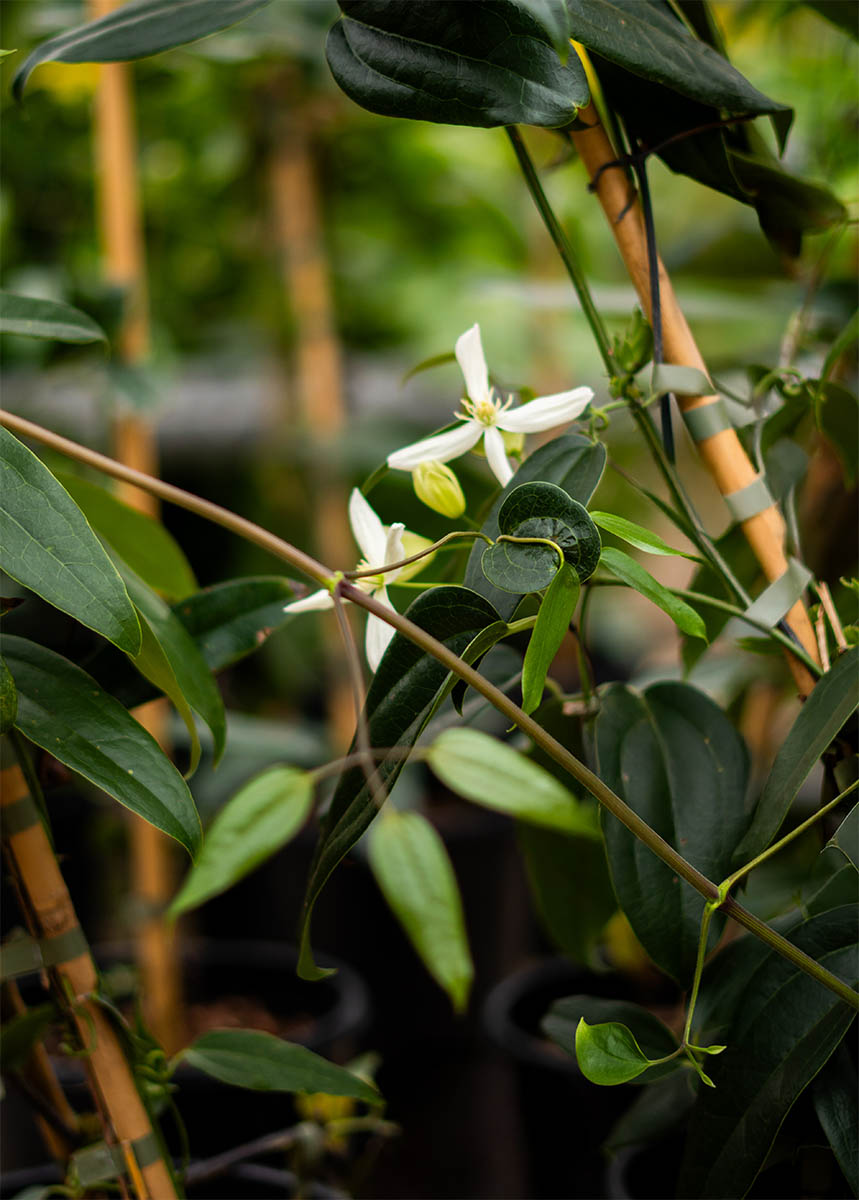
Clematis armandii
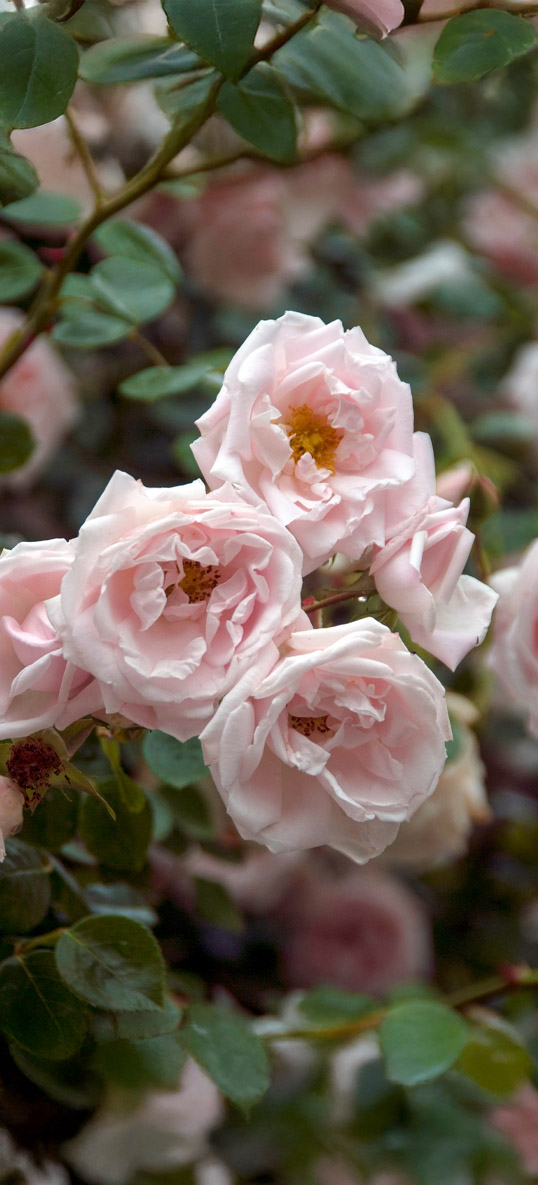
Rosa ‘New Dawn’
Hedera helix
Hardy native evergreen climber with glossy, lobed dark green leaves. Self-clings using aerial rootlets, excellent for providing year-round coverage of fences, walls, or shaded screens. Low maintenance and wildlife-friendly, offering shelter and food for insects and birds.
Trachelospermum jasminoides
Evergreen climber with clusters of intensely fragrant, star-shaped white flowers in summer. Glossy green leaves that may take on reddish tones in colder months. Twining stems reach 3–5 m with support. Prefers a warm, sheltered, sunny spot in well-drained soil, ideal for adding scent to patios and garden entrances.
Clematis vitalba
Commonly known as Old Man’s Beard, this vigorous native climber produces masses of small, creamy-white flowers in summer, followed by distinctive fluffy seedheads that persist into winter. Deciduous, twining stems can reach over 10 m when established. Thrives in sun or partial shade, often found in natural hedgerows and woodland edges, providing excellent wildlife habitat.
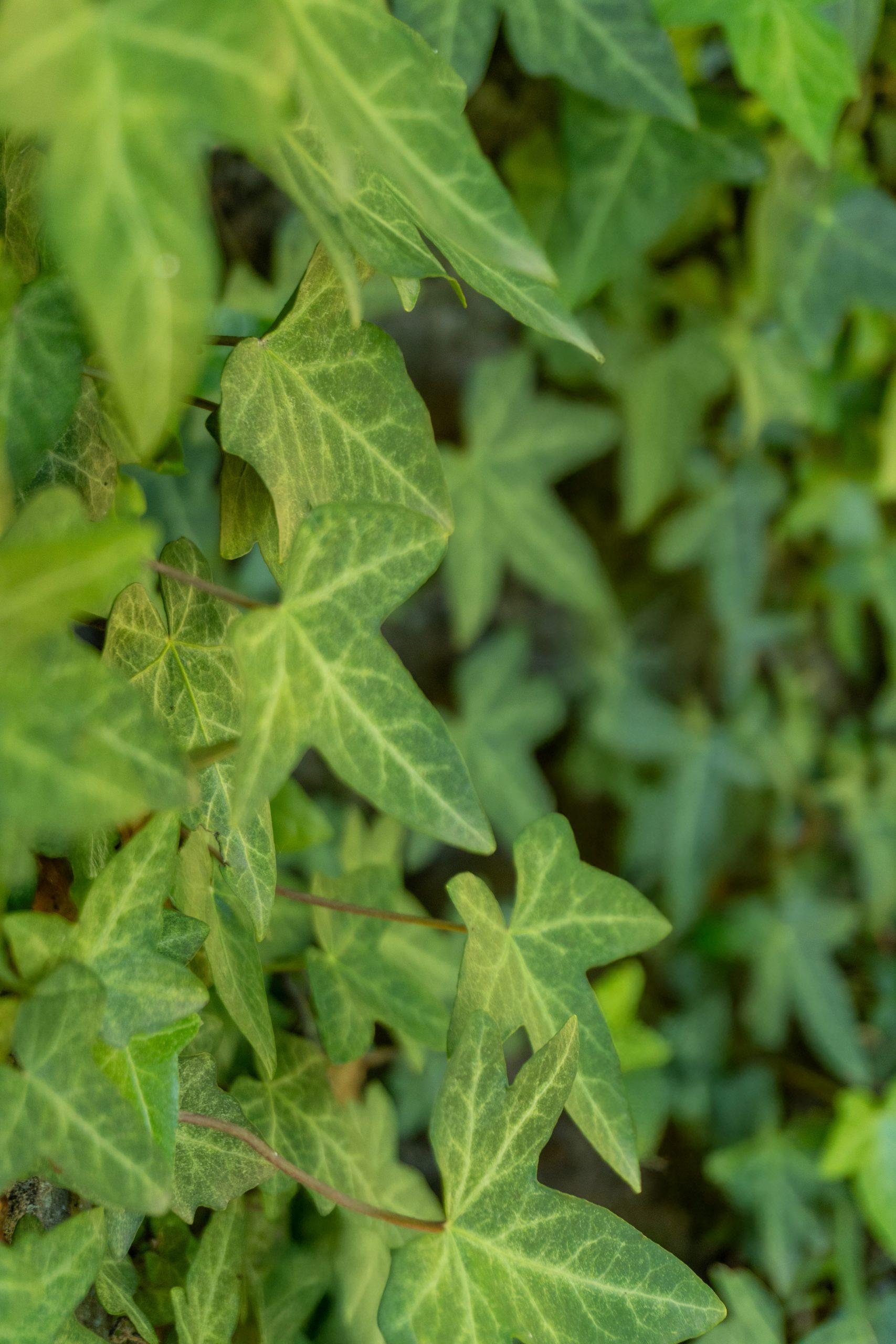
Hedera helix
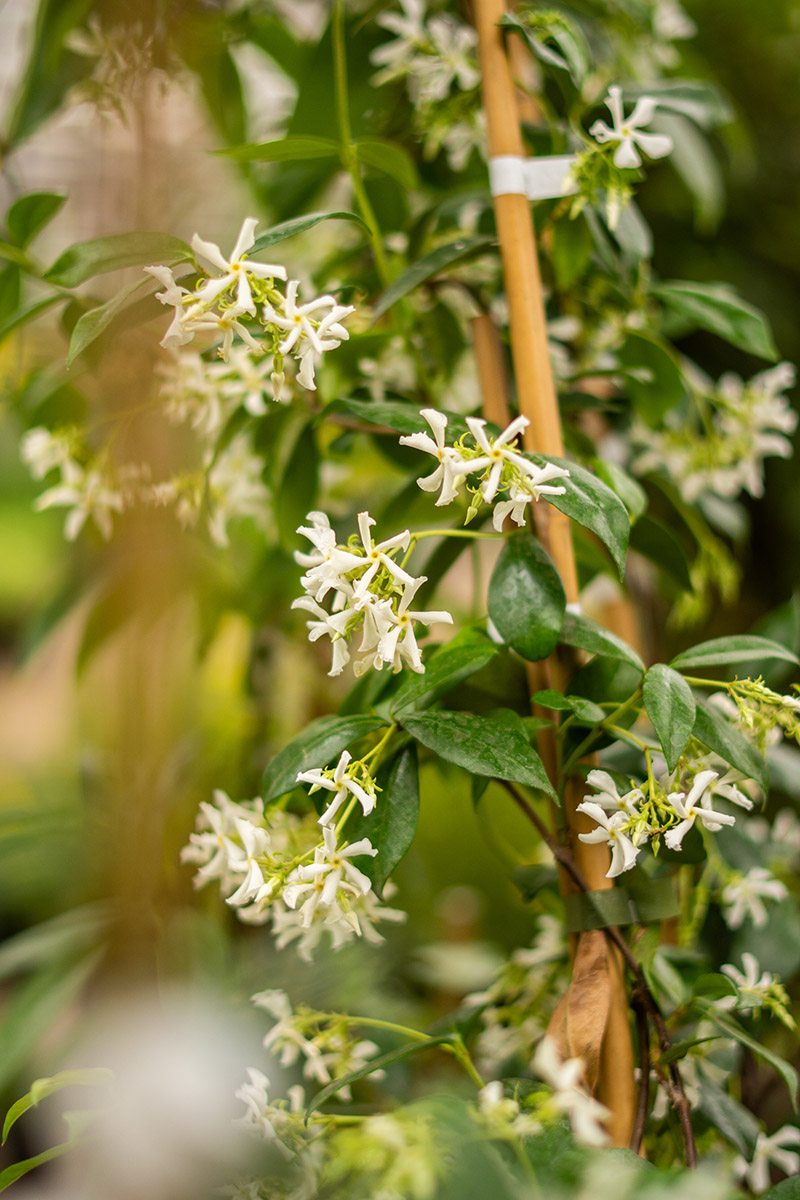
Trachelospermum jasminoides
Points to consider when growing climbers
While climbers offer many benefits, they can sometimes create challenges if not managed properly. Many species grow rapidly and may need frequent pruning to keep them in check, particularly vigorous plants like ivy or wisteria. Some climbers with self-clinging aerial roots can damage old or weakened brickwork if allowed to grow unchecked. Heavy climbers may also put strain on trellises or pergolas if the supporting structure is not strong enough to bear their weight.
Climbing plants can occasionally suffer from pests and diseases. Aphids and greenfly often attack young shoots and flower buds, particularly on climbing roses and honeysuckle. Powdery mildew can affect clematis and honeysuckle, especially in dry conditions with poor air circulation. Scale insects may infest evergreen climbers like star jasmine, weakening the plant over time. Regular monitoring and prompt treatment, alongside good planting practices such as spacing for airflow and keeping plants well-watered but not waterlogged, help prevent these problems from becoming serious.
Selecting the right climbing plant depends on several factors, including available space, the strength of supporting structures, and the effect you want to achieve. Evergreen climbers provide constant foliage cover, while deciduous varieties often offer spectacular flowers or autumn colour. Vigorous species can quickly cover large areas, perfect for screening or softening bare walls, whereas slower-growing climbers are better suited for smaller spaces or delicate trellises.
Climbers bring an extra dimension to planting schemes, making use of vertical space and providing colour, fragrance, and shelter for wildlife. When chosen and maintained carefully, they can transform garden spaces, turning simple structures into thriving, living features that enhance landscapes for years to come.
To learn more about the different types of climbers that we grow and sell, speak to the G Team today.

